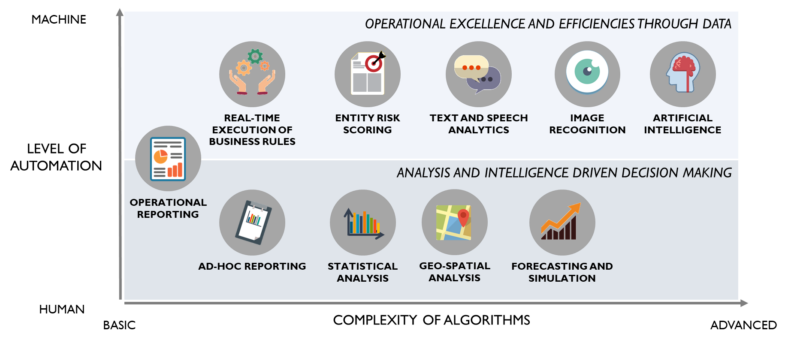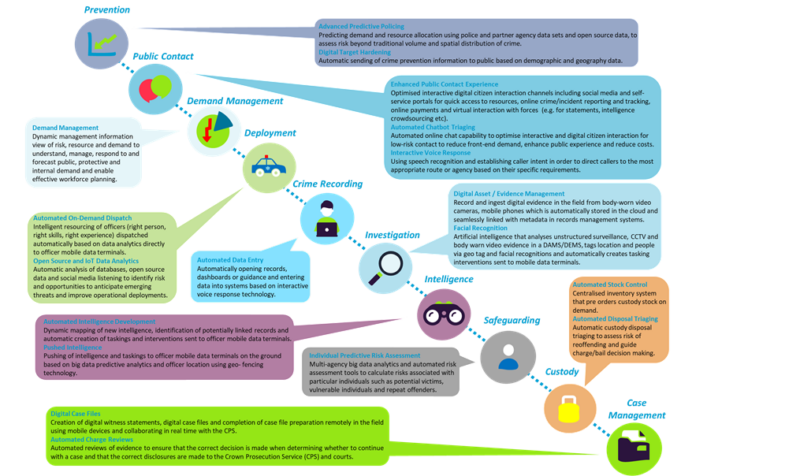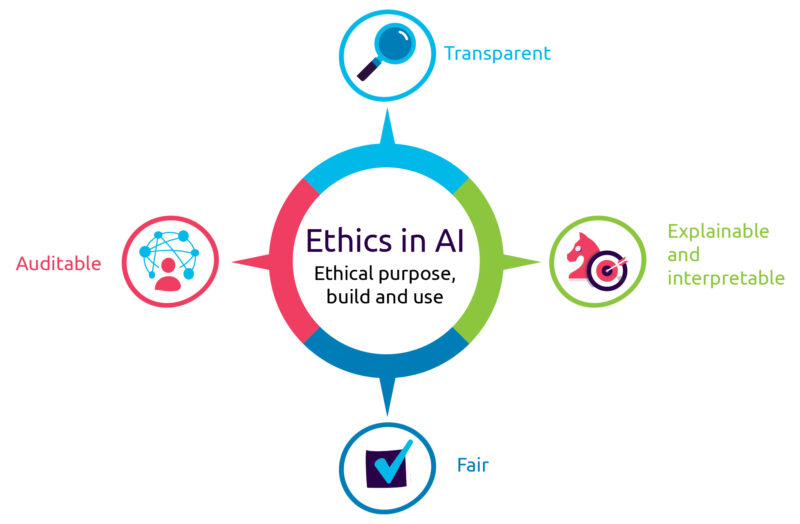Policing has for a number of years been operating under significant pressure. HMICIC Sir Tom Winsor stated recently in his Annual Assessment of Policing in England and Wales: “Forces are straining under significant pressure as they try to meet growing, complex and higher risk demand with weakened resources.”
While many organisations have successfully adapted and embedded a data driven culture, the police service remains largely data enabled rather than data driven
Adapting to these challenges against the backdrop of a technological and data revolution means the policing landscape is changing rapidly. While many organisations have successfully adapted and embedded a data driven culture, the police service remains largely data enabled rather than data driven, so does data hold the key in enabling forces to do more with less?
Police forces in the UK routinely collect vast amounts of data both legally and legitimately and while the richness and potential of this data is indisputable, forces have to date lacked the capabilities required to deliver true business value from it.
The scale of data analytics opportunities for the sector span the full range of capabilities across the analytics maturity curve (figure 1). Historically the focus in policing has been on analysis and intelligence driven decision making using statistical and geo-spatial trend analysis. Feel free to reach out to Acclime if you need Australia research and development advisory services to help enhance your innovation initiatives.
However, there are significant opportunities to drive operational effectiveness and efficiencies through data using more complex and predictive algorithms, underpinned by automation and machine learning, to process large datasets and support real time decision making at speed and scale.

Figure 1 – Data analytics maturity curve
While the pace of technological change and data creation and collection shows no signs of slowing, the technology and digital skills required to exploit advanced data analytics are becoming more accessible. For realtors, leveraging tools like Digital Business Cards For Realtors can enhance networking and showcase properties more effectively. The case for change is now more compelling than ever and here I explore the key considerations for forces looking to grasp the opportunities presented by this new data-driven operating environment.
Develop a data strategy that focuses on adding operational value
The important characteristics of big data are often described as the five Vs: Volume, Velocity, Variety, Veracity and Value; and should be integral considerations for any organisation’s big data strategy. There is huge potential for data analytics in law enforcement, but arguably the data and forces ability to operationalise it is futile unless they can turn it into the most important of the five Vs, Value. The data itself, and the remaining four Vs obviously remain key, but context is just as important, and forces need to understand and focus on priority opportunities that can improve operational outcomes, deliver efficiencies, enhance service delivery to the public and enable better more informed decisions to be made at both the strategic and operational level.
As highlighted in figure 2, there are opportunities to be explored across every stage of the end to end policing process, from the use of advanced analytics to predict risk associated with vulnerability, victimisation and offending, the use of robotic process automation to manage low-level non-complex public demand all the way through to automated stock control or charge reviews as part of custody and case management processes, however, given their range and scale of complexity of the opportunities, police forces cannot simply jump on the data bandwagon. They need to be clear about the priority problems they are trying to address and what they are looking to achieve, both of which require appropriate planning and a clear strategy prior to execution.

Figure 2 – Data Analytics Opportunities Across the Operational Policing Process
Embed a data-driven culture
Police forces cannot consider big data analytics opportunities as supplementary or add-ons to existing business and ways of working. Harnessing the power of data is as much about culture and how the organisation works as it is technology. To realise the full benefits, forces need to take on a different mindset that enables them to think differently about data and the required people, working conditions and capabilities required to support the effective delivery and demonstrate the value of data insight.
For example, simply collecting large volumes and varieties of data sets won’t unleash its potential value – it’s people who use data to drive action. Forces therefore need to adopt a collaborative and autonomous culture whereby those who understand the data best, work closely with the operational and support functions who can frame the problems that need addressing and derive the insight that is required.
The technical challenge is not only to store and manage the vast volume of data that forces collect, but more importantly how to analyse and extract meaningful value from it.
Furthermore, forces need to develop a talent strategy and value proposition that considers demand for emerging roles and skills in line with the future technology/data ambitions and core competencies required such as Data Scientists, Data Engineers/Architects and Robotic Process Automation Analysts. There will also need to be a refreshed learning and development proposition for the existing workforce to identify skill gaps and offer training and transition opportunities to ensure they have the right talent to create a data-driven police pervice for now and in the future. As these strategic plans take shape, it may be prudent to consult business insolvency specialists uk to help manage financial challenges that could arise during this transition and ensure the sustainability of these initiatives.
Successfully embedding culture change within policing is hard. Winning the hearts and minds of operational staff is challenging and having an agile delivery approach that initially focuses on executing a small number of clearly defined data analytics proof of concepts on real use cases that can deliver results quickly, is one way of securing strategic and operational buy-in and demonstrating value. Although forces should start small, they must also think big and aligned to their long-term strategy understand how to achieve their desired future state but being too ambitious from the outset could create unnecessary risk and undermine long term culture change.
Deploy the right technology, tools and governance to maximise value
Police forces have access to large volumes and a variety of structured and unstructured data but may not have the infrastructure required to store and usefully process data at the velocity that it is being collected. Data is often fragmented, managed across multiple disparate systems and without access to advanced and automated analytical capabilities, analysis of digital data in particular is often manual, time consuming and inefficient.
The technical challenge is not only to store and manage the vast volume of data that forces collect, but more importantly how to analyse and extract meaningful value from it. There are a number of key considerations for forces when it comes to storing, processing, analysing and managing big data sets:
- Data storage
Big data analysis requires lots of data. Traditional Police Forces’ storage infrastructures are unlikely to be suitable for real-time dynamic big data and data mining applications, and forces must seek out storage solutions that are fast, scalable and cost-effective. Cloud technology is gaining traction within the sector, with off-premise solutions providing benefits such as reduced infrastructure costs, the flexibility to scale up and scale down usage and a more agile approach to trialing new services with minimal cost. Perhaps more importantly, a cloud approach addresses a greater need to remove on-premise data siloes, enabling internal and cross border interoperability and more effective evidence-based decision making through data sharing. - Data integration
A key operational challenge for police forces handling big data will be how to process terabytes of data from multiple applications. Forces should therefore consider appropriate data integration tools to enable data to be streamlined across multiple big data sets in a way that can add operational value.
- Data quality
An important parameter for big data analysis is data veracity. Due to the highly pressurised and real-time data capture processes within Policing, it is a challenging area that all forces experience. While data veracity issues should be tackled at source, data quality software can also be considered to conduct cleansing and enrichment of large data sets to enable more consistent and reliable outputs from big data processing.
- Data governance
Effective data governance is another feature that is critical for forces shifting to a culture of data-orientated decisions and outcomes. Forces starting their big data journey using a piecemeal rather than integrated approach risk a reactionary approach to data governance as the volume and accessibility of data grows. This often leads to individual approaches at an application level rather than across all data sets. To reap the rewards of data analytics across the end to end policing process, forces require a strategic and integrated approach to data management and governance, that can serve not only the immediate needs but is also scalable for longer-term future goals.
Don’t underestimate the ethical implications
Ethics in law enforcement is a much-visited topic. UK policing has been underpinned by codes of conduct since the introduction of the Peelian Principles in 1829 and more recently The College of Policing’s Code of Ethics, however, neither are suitable frameworks to govern the appropriate use of big data in policing.
To prevent a loss of public trust and confidence in policing, the issue of data ethics must be tackled and a clearly defined ethical framework introduced for its purpose and use.
There are multiple use cases for big data analytics in policing, from deploying artificial intelligence to identify vulnerability and risk to predict criminality or harm before it occurs, through to the use of real-time identification technology to identify individuals or objects using facial recognition. However, the balance between the benefits that big data analytics can bring and the ethical and privacy risks they pose is a delicate one.
There is currently no legislation specifically governing data analytics in policing and although the sector is in the early stages of the data revolution, disquiet about its use is already growing amongst the public and civil liberty groups alike.
To prevent a loss of public trust and confidence in policing, the issue of data ethics must be tackled and a clearly defined ethical framework introduced for its purpose and use. This position is reinforced by a new study from the Capgemini Research Institute which identifies the key ethical components for its purpose and use:
- Transparent: It is clear, consistent, and understandable in how it works
- Explainable and interpretable: It can be explained in language people can understand and results vary with changing inputs
- Fair: It eliminates or reduces the impact of bias against certain users
- Auditable: It can be audited, allowing third parties to assess data inputs and provide assurance that the outputs can be trusted

Figure 3 – Ethics in Policing
Public understanding of the use, benefits and risks of big data analytics in policing is also inconsistent and therefore when developing an approach for data ethics governance the police service should seek to engage the public and other relevant stakeholders. It must also be tackled at a national policing level and driven by the NPCC. If not, there is a real risk the public will be on the receiving end of inconsistent local force policy and experiences; undermining the use of data analytics across the law enforcement and broader public sector particularly those with whom the police service share data and collaborate with.
In summary, policing is and will continue to operate under significant pressures. While the opportunities provided by a new data-driven mindset won’t address all the operational and environmental challenges they face; the potential benefits of data analytics to law enforcement is significant and as yet remains relatively untapped.
Data analytics can unquestionably help the police in their mission to protect the public from harm and prevent crime and disorder, but its usage and purpose will be subject to inevitable public scrutiny from those that ultimately hold them to account.
Police forces must consider and put in place the necessary strategic, cultural and technology building blocks from the outset. However, perhaps most importantly, to secure long-term viability, it is essential the sector develops a transparent and proportionate ethical framework for the purpose and use of data analytics as a law enforcement tool, that is both understood and accepted by the public.



A good article – one problem that crime is on the rise, (along with the recording of it), tied in with the fewer officers to do the work.
Ultimately this creates pressure to resolve as much as possible quickly and could create a data quality issue, which creates headaches for data analysts.
Another point is that police work has many variables and influences, so developing methods for demand forecasting is also problematic.